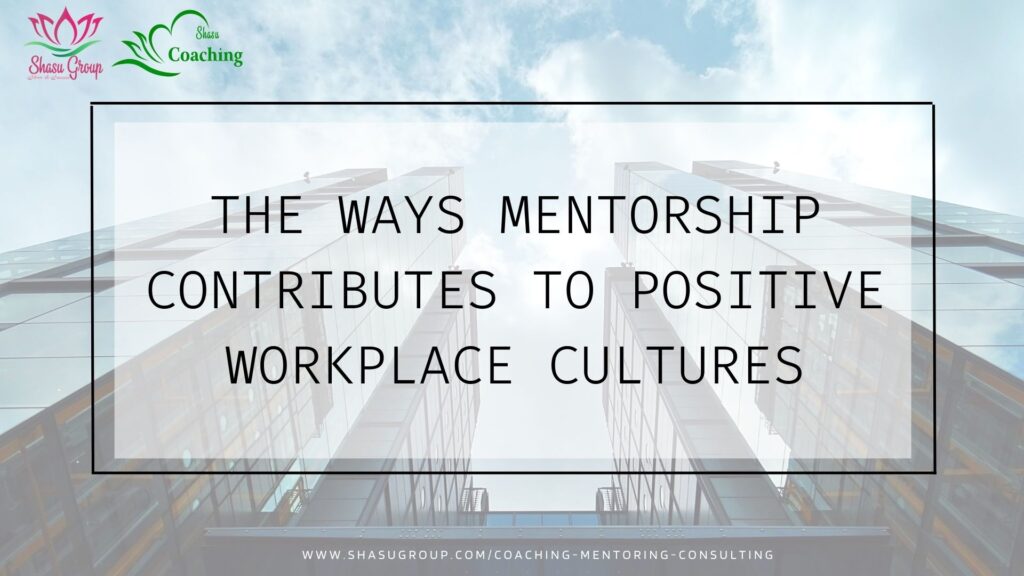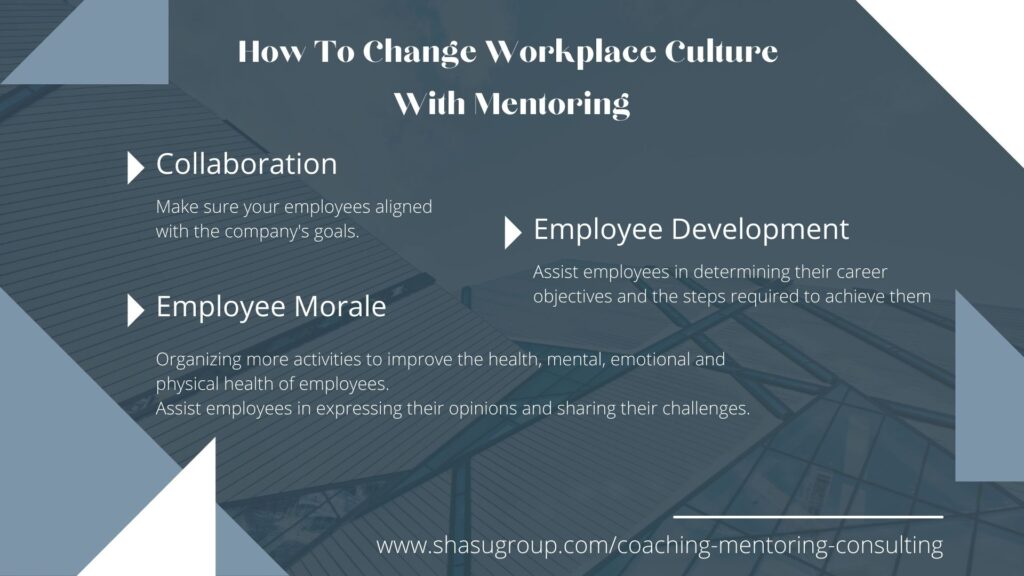How Mentorship Influences Workplace Culture
With their knowledge and practical experience, mentors can advise and support junior employees develop leadership skills or practical skills like problem-solving and communication.
Furthermore, a mentor can identify which skills employees lack and provide coaching to help them bridge the gap. Employees are more productive when mentoring relationships are encouraged in the workplace. They not only assist with skill development, but they also show mentees that their organizations value them and are invested in their development.
These ways mentorship contributes to positive workplace cultures

Collaboration
According to the survey, employees prefer to work as a team in companies which has a strong cohesive culture.
In addition, you need to impact the new hires about the company’s mission and vision so that they can better understand the direction. And more importantly to make sure they’re aligned with the company’s goals.
Any person in the company needs training on diversity and company values in addition to technical job training. Of course mentorship is a way to do this.
Employee Morale
Mentoring programs go hand-in-hand with the goals of wellness programs. So, you also need to organize more collective activities to improve the health, mental, emotional and physical health of employees.
Mentorship is extremely important in navigating the new workplace. Mentors can assist employees in expressing their opinions and sharing their challenges. In addition, they can also assist employees in connecting with the company’s resources that support their well-being.
Employee Development
Some employees can’t identify how they can progress in their careers. So mentor have to put yourself in the employee’s shoes to help them shed light on opportunities they may not have seen before.
They can also assist employees in determining their career objectives and the steps required to achieve them. Mentors can expand opportunities for employees as they advance by introducing them to key decision-makers.
Mentors assist employees in continuing to grow and not plateauing in their careers in this way. These are crucial in the development of employees.
How To Change Workplace Culture With Mentoring
Mentorship has many advantages, but it is not without its drawbacks. Mentorship programs rely on a good match between mentor and mentee.
Employees from diverse backgrounds would prefer different style of mentor. May be they feel their mentor match is relevant to them if they don’t share their gender, ethnicity, or religion.
It’s challenging for organizations to make sure every employee from a diverse background has a mentor similar to them. For this reason, employee resource groups or group mentoring programs are common. These programs allow one mentor to guide several employees.

Some of the ways to promote a diverse and inclusive work culture through mentoring are:
Choose a wide range of advocates
Employees from all departments and levels of the organization are invited to participate in the most effective mentorship programs. This entails making these programs accessible to all employees. Besides that, you should provide a variety of mentorship programs, including top-down, middle-out, and bottom-up approaches.
- Top-down: Look for senior leaders who can mentor you and provide testimonials that you can share. Having senior-level executives promote your program demonstrates that they care about their employees’ development.
- Middle-out: Consider recruiting managers and supervisors to provide endorsements and testimonials. Encouraging an employee’s participation by a direct supervisor can go a long way toward motivating them to sign up.
- Bottom-up: When participants are invited to participate in group discussions and online communities, mentoring employee resource groups is most beneficial. This is due to the fact that participants will discuss their mentoring experiences and share them online in order to attract more participants and raise awareness.
Focus on diversity
Gender, age, race, ethnicity, education level, sexual orientation, and other factors all contribute to diversity. A mentoring program aimed at diversity means that you’re inviting your employees to collaborate and share ideas from new angles and ensuring all voices are heard. This is why having a variety of mentorship programs is so important for inclusivity.
Additionally, you can expand mentorship into the community to serve newer employees with internship programs. This will ensure that young professionals like millennials and GenZ can explore their career options and invest in their professional futures.
Include all employees
Mistakes of companies are just organizing mentorship programs for senior officers or high potential employees. To broaden the concept of mentoring, consider deploying different types of mentor-mentee relationships.
For example, consider reverse mentoring instead of the traditional mentoring relationship where an older mentor guides and helps a younger mentee with career choices.
This involves a mentoring relationship where the older/senior person is the mentee, and the junior person is the mentor—being open to different types of mentoring leads to a more collaborative and positive work environment where every employee has something to contribute and learn.
Collection & Edit by Marketing Dept from Shasu Coaching & Shasu Mentoring
Reference
https://www.togetherplatform.com/blog/how-to-change-workplace-culture-through-mentorship
Learn more about our services: https://news.shasu-group.com/category/tin-tuc/shasu-consultant-coach-mentor/
Contact Ms. Thảo Hồ for Coaching & Mentoring Services from Shasu https://www.shasugroup.com/coaching-mentoring-consulting
Follow us:











